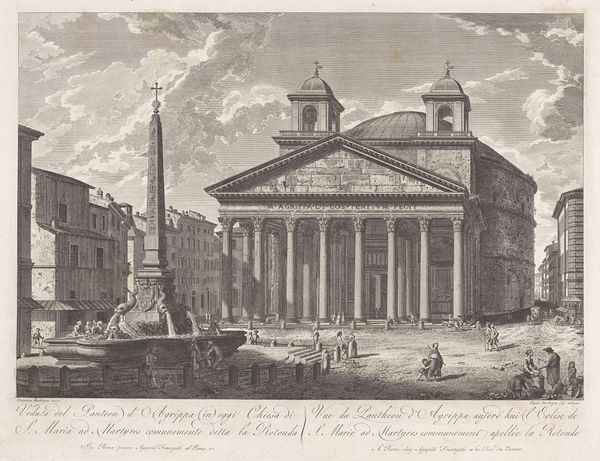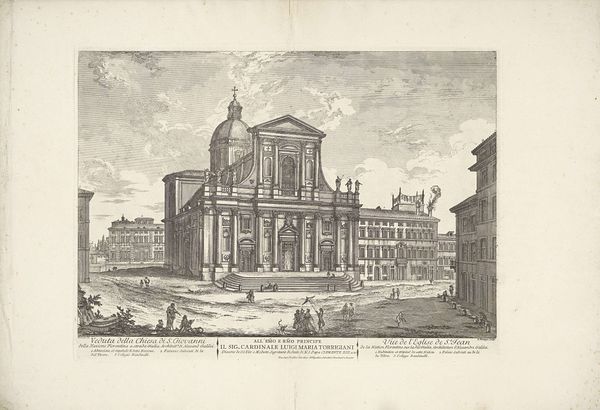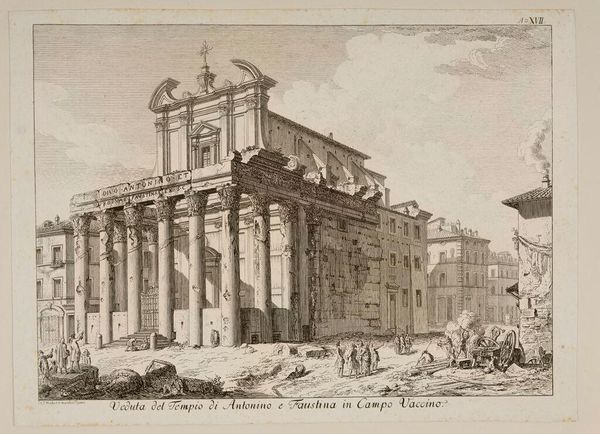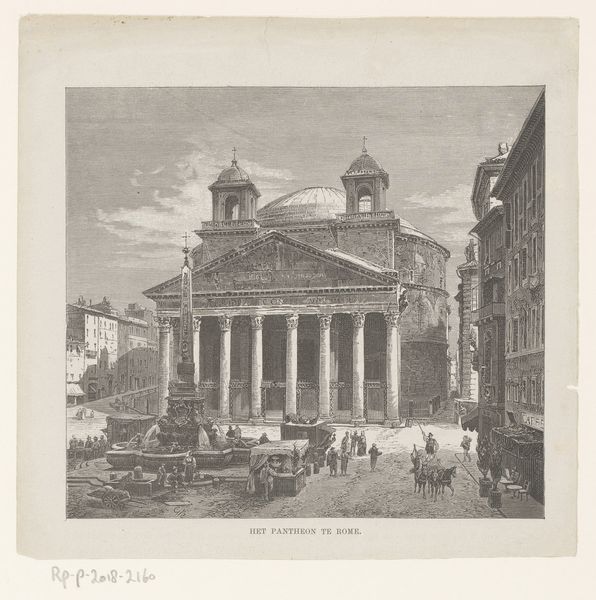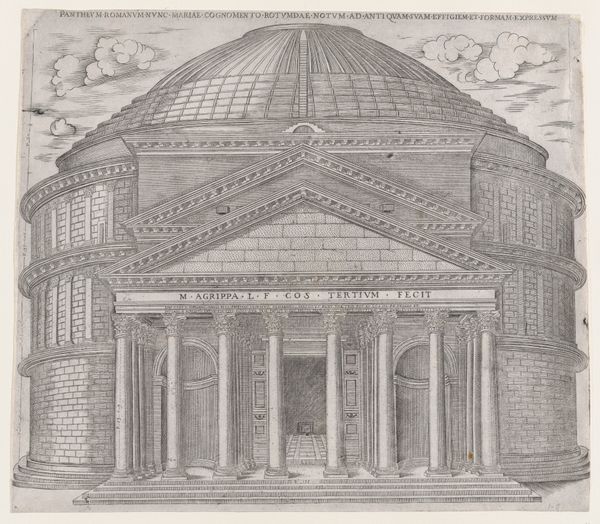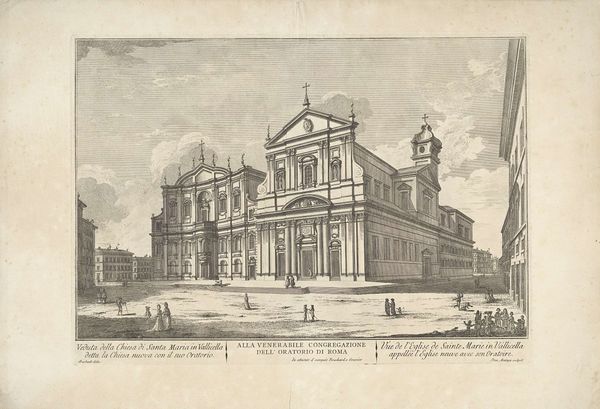
print, engraving, architecture
#
neoclacissism
# print
#
perspective
#
cityscape
#
engraving
#
architecture
Dimensions: height 475 mm, width 564 mm
Copyright: Rijks Museum: Open Domain
Domenico Amici made this print of the Pantheon in Rome, rendered in precise lines etched into a metal plate. It’s a traditional method for reproducing images, and this particular print gives us a look into the culture of its time. Engraving is an exacting process, requiring the artist to cut lines into a metal plate; these grooves hold ink, which is then transferred to paper under high pressure. Note the fineness of the detail here: Amici skillfully captures the Pantheon’s architectural grandeur and bustling street life. But look closer and you'll see that the print is about more than just the building itself. It’s a snapshot of Rome, a city undergoing modernization. Prints like this were luxury commodities. They were a means of distributing architectural knowledge, and also a form of cultural capital. The labor involved in creating the print is considerable, yet it seeks to represent a building—the Pantheon—which itself represents centuries of labor, politics, and power. This print is more than a picture; it’s a document of its time, reflecting the complex relationship between art, labor, and society.
Comments
No comments
Be the first to comment and join the conversation on the ultimate creative platform.
